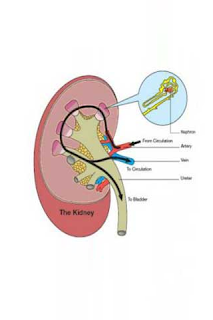Spinal Stenosis Symptoms, Causes And Treatment Options
Spinal stenosis is a physical condition in which
the spinal column narrows & begins squeezing the spinal cord. This
procedure is usually steady. If the contraction is negligible, no symptoms will
take place. However, too much contraction can squeeze the nerves & prompt
problems. Stenosis can occur anywhere along the spine. How much of the spine is
affected can differ. Spinal stenosis is also known as pseudo-claudication,
central spinal stenosis or foraminal spinal stenosis.
What are the spinal stenosis symptoms?
Symptoms usually develop over time, as nerves
become more squeezed. You might experience:
·
Lower back ache while walking
or standing
·
Arm or leg weakness
·
Numbness in your buttock or
legs
·
Balance issues
·
In severe cases, bowel or
bladder dysfunction
(Spinal stenosis)
Spinal stenosis causes:
Aging is probably the most typical cause of
spinal stenosis. Degenerative processes take place all through your body as it
ages. Tissues in your spine may commence to coagulate, and bones may get
bigger, squeezing the nerves. Conditions such as rheumatoid arthritis and
osteoarthritis may also contribute to spinal stenosis. The swelling they source
can put strain on your spinal cord.
(A lumbar corset may help when symptoms persist)
Other conditions that may prompt stenosis
encompass:
·
Scoliosis or spinal curvature
·
A naturally thin spinal cord
·
Spine defect present at birth
·
Bone tumors
·
Paget’s disease of the bone
How spinal stenosis is diagnosed?
If you experience the
above spinal stenosis symptoms, your
physician will start by checking your medical history, doing a physical test,
and monitoring your movements. Your physician may order tests to corroborate a
suspected diagnosis, for example:
·
MRI
Scan, X-ray, or CT scan to view pictures of your spine
·
Bone
scan to check out injury or growth in your spine
·
Electromyelogram
to check the condition of spinal nerves
Spinal
Stenosis Treatment Options:
Pharmaceutical
treatment is usually tried first. The objective is to ease out your pain.
Cortisone injections into your spinal column can decrease swelling.
Nonsteroidal anti-inflammatory drugs (NSAIDs) can also help with pain.
Physical therapy may
also be a choice. It can strengthen muscles & gently stretch your body.
Surgery may be required for severe pain or if
there’s a neurological loss. It can ease out pressure permanently. Several
kinds of surgery are employed to treat spinal stenosis such as Laminectomy,
Foraminotomy, and Spinal fusion.
Conclusion:
A lot of people with
spinal stenosis lead full lives & remain active. However, they may require
to make changes to their physical activity. Many people experience residual
pain after treatment or surgery.


Comments
Post a Comment